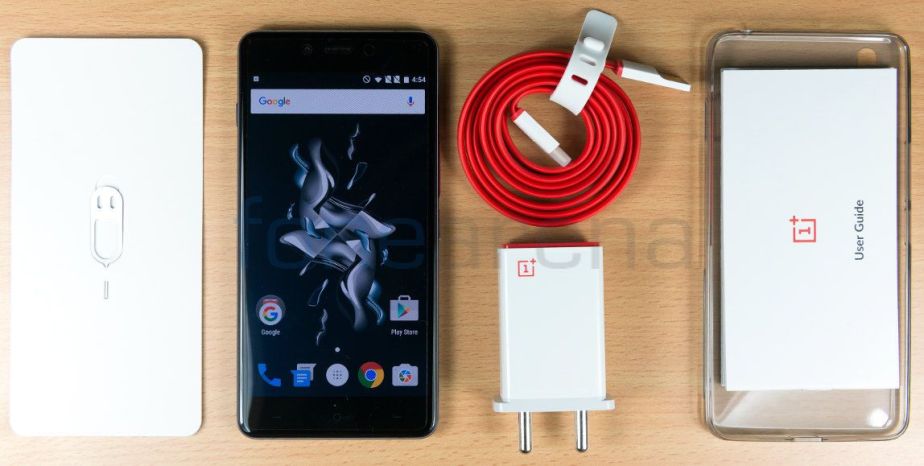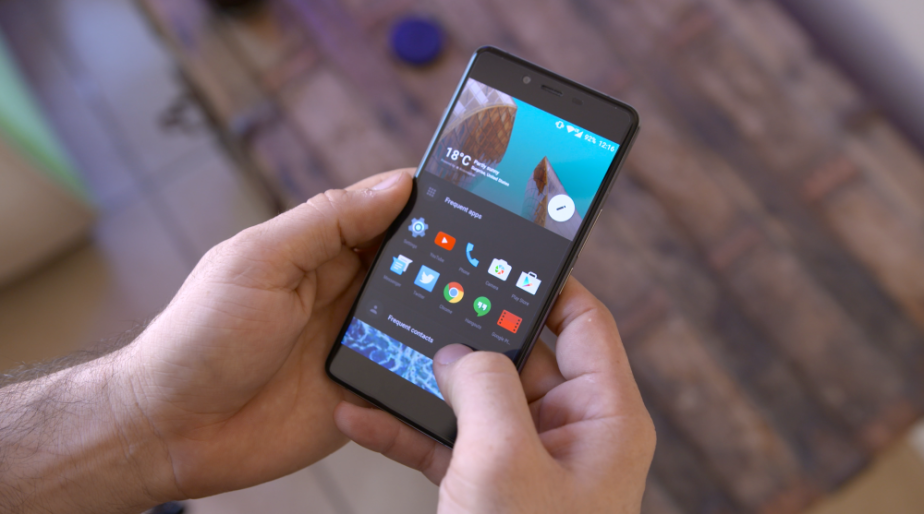INTRODUCTION
One Plus, a Chinese smart phone start up, made waves last year, when they launched the much lauded One Plus One. Packed with flagship level internals, and an unbelievable price tag, One Plus One soon became the heartthrob of the smart phone market. Earlier this year, One Plus announced its successor, the One Plus Two. However, the phone could not live up to the hype generated by its predecessor, and the continuance of the invite-only system made prospective buyers look elsewhere. And now, One Plus has launched their first mid-range smart phone, in an attempt to reclaim its lost glory. Will it?
UNBOXING
Unboxing the One Plus X, I couldn’t help but marvel at the beauty of the packaging and their attention to detail. You get a charger, a high quality flat-wired micro-USB cable along with the usual literature, and of course the One Plus X itself. One Plus has also included a translucent back cover, which is great. I am unsure whether this happened with others. Anyways, One Plus has also included a factory-fitted clear- screen guard. But, be careful while peeling off the protective film, as you may remove the screen guard along with it.

DESIGN AND BUILD QUALITY
On paper, one plus seems to be a rejigged One Plus One, with the same internals and price bracket. But one look at the phone and you will know the difference. With glass to the front and back and metal to the sides, this phone looks and feels gorgeous. The device sports a Corning Gorilla Glass 3 covered 5” AMOLED display, flanked by the earpiece sensors, 8 MP front camera and a notification LED at the top and the reversible capacitive keys at the bottom. The back has a shiny, glossy, inky-black scratch resistant glass with the One Plus logo and a 13MP camera and LED flash, flush to the back. The edges are metal clad, with 17 high precision microcuts, which gives the phone a good grip. The sim tray (housing a hybrid dual SIM/ microSD card slot), volume rockers and the power button are to the right, while we see the alert slider from the One Plus Two on the left. The top has a 3.5 mm audio jack and the secondary noise cancellation microphone, while the single firing speaker, the micro USB port (not USB type-c) and the primary microphone are at the bottom. The dual speaker grille, out of which only one fires, gives the phone a beautiful symmetry and shows the attention to detail. The front and back panel has 2.5D curved glass that hides the bezels and gives the phone a premium, elegant look. At about 6.9 mm thick and under 140g, the phone is extremely compact and single handed usage is a breeze.
Yes, the back glass is a finger print magnet and is slippery, but that is to be expected. These minor gripes aside, the One Plus X is the best looking phone I have ever seen. It has its inspirations, but it still manages to stand out on its own.

DISPLAY
As mentioned above, One Plus has gone with an AMOLED panel in the One Plus X, and hence it has punchier colours, deep blacks and excellent viewing angles. The screen has a resolution of 1980×1080 with a pixel density of 441ppi. The display is bright and sharp with no pixilation. An AMOLED display also means One Plus X can make use of features like ambient display (screen lights up when you get a notification) and proximity wake (waving your hand over the sensors will bring up the time and notifications) without eating up the battery life, since only individual pixels needs to turned on, unlike an LCD display. One Plus also has a dark mode enabled by default, which further helps in the battery longevity, while differentiating the phone from other vanilla android counterparts.
I hope One Plus implements a colour calibration option, so that people wanting accurate colour temperatures can tone down the saturation. Also, the whites have a slight pinkish tint at certain angles. It is invisible if you won’t look for it, but I thought it was worth mentioning.
PERFORMANCE
The phone, though a mid-ranger, does not come with mid-range internals. Instead of going for a Snapdragon 615 or a 617, One Plus has packed this phone with the old flagship Snapdragon 801 chipset. This means, the phone has four Krait 400 cores, clocked at 2.3 GHz each, and an Adreno 330 GPU (clocked at 578 MHz). It has 3 GB of RAM an 16 GB of on-board storage, out of which about 11 GB is free on the first boot (the storage is expandable). Note that, contrary to reports, this is not the Snapdragon 801 used in the One Plus One. That was an overclocked CPU, namely, the MSM8974AC. The one used in the One Plus X is the MSM8974AB. This doesn’t mean much to the normal user, for whom, the performance will be a breeze. Apps open quickly, there is minimal lag and the huge RAM means multitasking is never a problem. Even gaming was a pleasant experience, with even high-end games like Modern Combat 5 played fine. Only Asphalt 8 displayed slight choppiness, but that may be a software issue due to lack of GPU optimisation, which will, most likely, be fixed. In fact, only if you compare it with the current gen flagships, would you notice any difference, which is excellent for a mid-ranger. There’s slight heating in the back panel, when the device is put to intensive usage, but it does not get over the 45 Celsius mark. Many would lament the absence of a 64-bit processing unit, but honestly, for that technology to become the norm, it would take at least a few more years, and until then it is just a spec to gloat about.
HARDWARE
The One Plus X continues the dual sim functionality introduced in the one plus 2, but this time, it is a hybrid slot! Yes, One Plus finally has a device which supports microSD upto 128 GB, that is, if you omit the dual sim functionality. There are two nano sim slots, with the second one doubling up as a microSD card slot. Both sim slots support 4G LTE, but only one can be activated at a time, while the other will run on 2G. The alert slider is also a useful feature, and has been revamped for a more pronounced texture and better feedback. There are three options; slide from the bottom, once for priority notifications and twice for no notification while the option at the bottom enables all notifications. The volume output from the bottom-firing speaker is pretty loud and clear, though a wee bit tinny. An inbuilt equalizer could solve the problem by bumping up the bass. However, the volume output from the headphone jack was excellent. I tested it with the Xiaomi Piston 3 and the Audio Technica ATH M20-x and I was impressed. The vocals are great, there is no breakage and the bass is adequate. The call quality via the microphone and the signal reception too were excellent, This might be a carrier issue, but I am not sure.
A lot of hardware features present in the One Plus One and one plus two have been omitted. There is no NFC, so Android Pay is off. The fingerprint scanner is also omitted, probably to cut costs. Along with these, there are also some unnecessary omissions which One Plus seems to have made. For one, the capacitive keys aren’t backlit. And more importantly, the more powerful 5 GHz WiFi band is missing. For US buyers, a major issue might be the lack of LTE, with bands 12 and 17 not supported. This means both T Mobile and AT&T customers will be stuck on the HSPA networks (3G). However, most international customers have no such issues and in India, Airtel’s 1800MHz and 2300MHz bands are fully supported. There is also no wireless charging or quick charging, and the USB-C type found in the One Plus Two has been replaced by the older micro USB port.
BATTERY
The One Plus X packs in 2525 mAh battery, and the battery life is above average. On a moderate day of usage, you will be able to last a full day with about 3.5-4 hours of screen-on-time. However, with a day of heavy usage, you might last only about 9 hours with 5 hours’ screen-on-time. On a looping video playback test in half brightness and full volume (in MX Player), the phone drained from 100% to 0% in about 8 hours. Though wireless charging and fast charging aren’t supported, it doesn’t make a huge difference, as the small 2525 mAh battery charges up reasonably fast with the included accessories
SOFTWARE
The One Plus X runs on Android 5.1.1, lollipop. However, after the bitter breakup with Cyanogen, One Plus X runs on its own custom android skin Oxygen OS 2.2.0. However, unlike other manufacturer overlays, one plus has a bloat free, almost vanilla interface with some nifty features added for customisation. First, there is the dark mode, which inverts the stock android look. There are features like App permissions (permissions manager on a per-app level), notifications manager (micro-manage app notifications) and quick settings management (choose which quick settings to be displayed in the notification toggle). The Shelf feature from the One Plus Two makes a return. Shelf is a feature which displays your widgets, recent apps and contacts in the leftmost home screen. It is harmless and useful at times, and at worst, it can be turned off. The gesture support from the previous one plus iterations, including double tap to wake, drawing an O or a V to open the camera and turn on the flash light from the lock screen respectively are also present and accounted for. Minor customisations like the ability to change the LED notification and the accent colour helps the user make minor cosmetic yet unobtrusive changes to the UI. The ability to turn on screen navigation overlay and swap buttons are highly appreciated, especially since the capacitive buttons aren’t backlit.

All in all, Oxygen OS is a great Android UI, one of the few which gives valuable customisation options without tinkering with Google’s version of an Android experience. It is also quite stable with no app crashes or slowdowns. At worst, the added features can be ignored and you can enjoy a stock android experience. Add to that, One Plus has an excellent software team working round the clock, solving bugs, making performance improvements and adding features. The Marshmallow update is also promised in a couple of months, so software wise, you are covered.
CAMERA
The One Plus X comes packed with 13 MP (4:3 aspect ratio) rear camera with LED flash, while there is an 8MP fixed focus front facing camera for selfie lovers. The primary camera, contrary to reports is not the same one used in either of the two previous One Plus smart phones. One Plus, this time went with a Samsung ISOCELL sensor with an f2.2 aperture and phase detection autofocus. This is the same sensor used in the Samsung Galaxy S5, but the similarity ends there. The photos are average at best, with unreliable exposure compensation and colour accuracy. Sometimes, the photos come out pretty good, while other times, it’s pretty disappointing. However, there is minimal shutter lag, the dynamic range is good and the saturation levels give punchier photos. The detailing and sharpness are also pretty good, as long as you don’t zoom in. All this is however in outdoor shots, with high noise levels creeping in, in low light and artificial lighting conditions. Move in to video, and it is the same. The video maxes out at 1080p, and provides decent footage under adequate lighting. But, in low light, it is shaky, loses focus quickly and has a lot of ghost effects. The front facing camera, on the other hand is excellent. With a wide angle lens and an f2.4 aperture, even artificial lighting produces great results. The beauty mode also helps without going overboard. The video quality of the front camera is also pretty good for Skype calls, and it also shoots at 1080p.
The camera app is decent, and offers basic features like a timer, panorama, slow motion and time lapse. Swipe up or down in the viewfinder for modes, and oddly, in the panorama mode, the orientation shifts to portrait mode, which is annoying. There is also a manual mode with minor granular control like ISO, white balance and focus. The photo mode also has clear image and HDR. While clear image is pretty good (it takes 10 shots of the same image to create the perfect shot, in theory), HDR just cranks up the exposure, without doing anything about the blown up highlights. And both take a couple seconds extra, though that is acceptable. The ring along with the focus tap, to adjust exposure is a welcome feature, though it is not as perfected as the one, say, in MIUI.
Overall, the camera is the phone’s weakest link, though it has to do more with software than hardware. I am sure, the camera interface and the quality will improve in coming times. And, don’t get me wrong, this camera is perfect for social media and instagramming, it’s just not for photography geeks.
MY TAKE
Overall, despite its flaws and trade-offs, One Plus X is a solid phone. And at a price of Rs 16999 or $249, it is the best smart phone money can buy! That too without an invite.
In my opinion, no phone is perfect. And everything comes at a price. For me, I need great looks, a great performance, and decent battery life. Issues like lack of NFC, a 64bit processor, 5GHz WiFi band, a finger print scanner and fast charging doesn’t matter to me, for I don’t use any of these. And I like a minimalistic and aesthetic design, so I like One Plus X more than the One Plus One too. So, in my humble, personal opinion, I love the OPX. I think it is a great phone. Some of cons do not affect me, others I trust the company to fix soon. But, I have diligently, mentioned all the pros and cons of the device, to the best of my abilities; now the choice is yours. My opinion – GO FOR IT!
My Rating: ![]()
*This article was published at amazon.in back in November.It has been updated where required.

